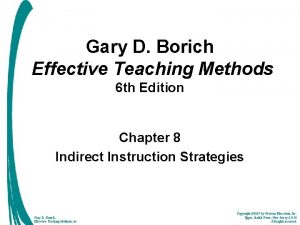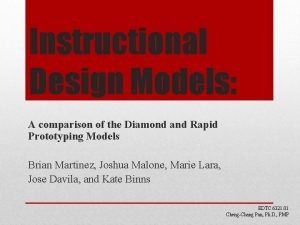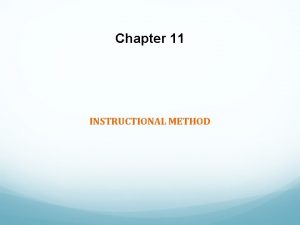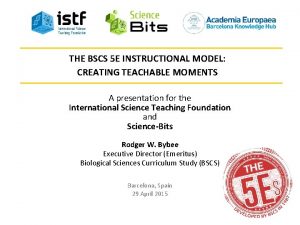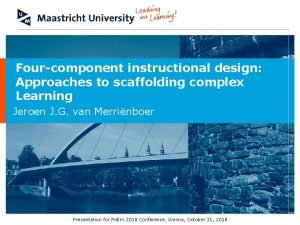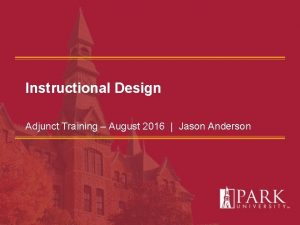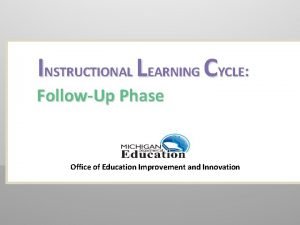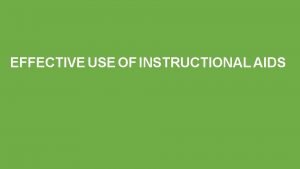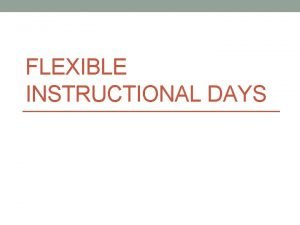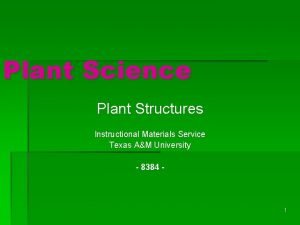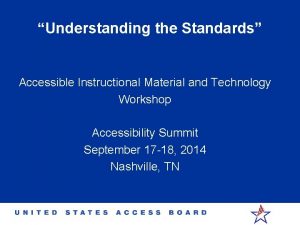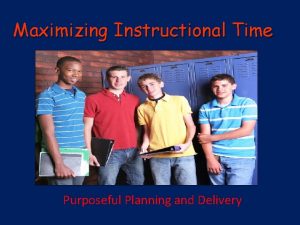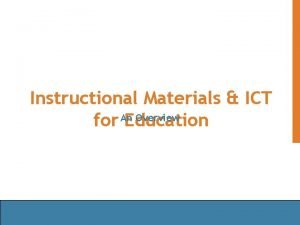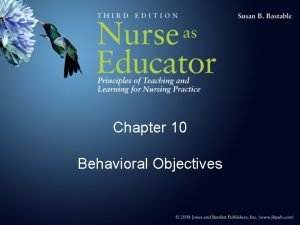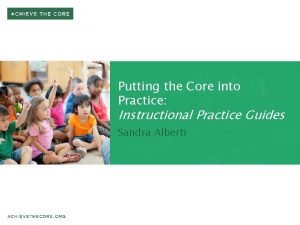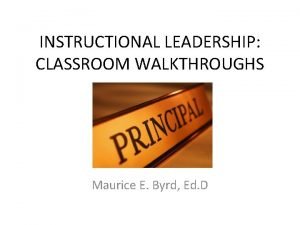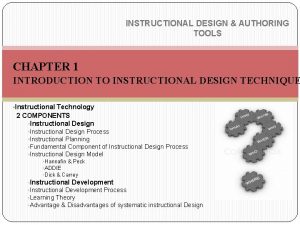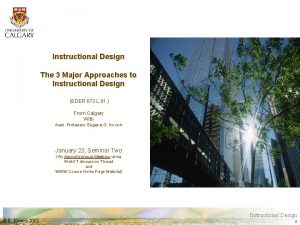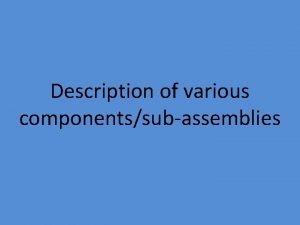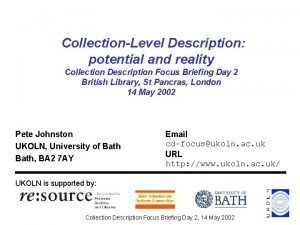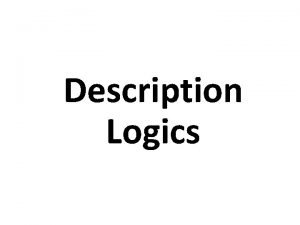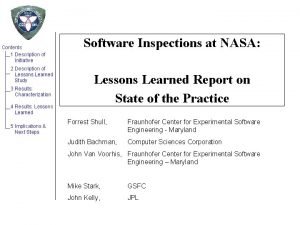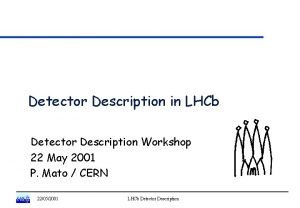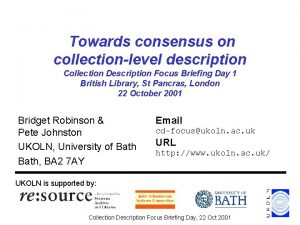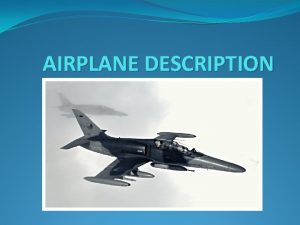Instructional Approaches Instructional Approaches n n n Description
























- Slides: 24

Instructional Approaches

Instructional Approaches n n n Description Attributes Applications

Presentation-Description n n Relates, Dramatizes, Disseminates info Uses verbal info or visual symbols One-way communications Examples n n n Read a book Listen to a tape Attend a lecture

Presentation-Attributes n n n n Teacher controls pace, content Accommodates variety of group sizes Student sees and hears same info Organizes content Presents a lot of content quickly Often includes auditory component Requires little activity from student No feedback to learners

Demonstration- Description n n Show students how to do a task Show why when where it is done Imitates a physical performance Examples n n n Swing a golf club Change oil in car Adopt attitudes

Demonstration-Attributes n n n n Utilizes multiple senses Illustrates ideas and abstract concepts Dramatic appeal Arouses interest Essential for teaching psychomotor skills Reduces hazards Sets performance standards Is time consuming

Discussion- Description n n Encourages classroom rapport Actively involves students in learning Introduces students to different beliefs Utilizes critical thinking skills Allows for assessment of student participation

Discussion-Attributes n n n Teaches content as well as interpersonal skills Students actively apply problem solving, critical thinking skills Interesting and stimulating Can change attitudes/behavior Students benefit from contributions of others Requires advance preparation

Cooperative Learning. Description n n Involves small groups of students working together Teaches social and communicative skills while teaching content Problem solving with others Supports community in classroom

Cooperative Learning. Attributes n n n n Promotes positive interdependence Encourages relational skills Facilitates academic and social learning Involves students in active learning Requires compatibility Takes more time to cover content Less appealing to individualistic learners

Discovery Learning. Description n n Enables and encourages students to find answers for themselves Students learn by doing Relates discovery to previous learning Uses inductive or inquiry approach

Discovery Learning- Attributes n n n n Allows students to use data Requires students to operate in the way required by the discipline Helps students learn to learn Provides intrinsic motivation Develops critical thinking skills Encourages higher order thinking Can be very time intensive

Problem Solving-Description n n n Students use previously mastered skills to resolve a challenge Define problems Formulate hypotheses Collect and analyze data Derive conclusions Verify conclusions

Problem Solving- Attributes n n n n Increases comprehension and retention Students apply theory to practice Involves higher learning processes Develops responsibility Has several possible answers Utilizes resources other than textbook Students practice strategizing

Instructional Games. Description n Provide an appealing environment Learners learn and follow rules to attain goal Highy motivating for repetitive content

Instructional Games-Attributes n n n Actively involves students Provides for practice of skills Students compete against themselves Can be tiered and levels of difficulty Can provide feedback Can be time consuming to set up

Simulation-Description n Learners confront a controlled approximation of a real life situation Provides realistic practice Can approximate very abstract concepts in concrete terms

Simulation-Attributes n n n Used for acquisition of info Improvement of processes Promotes cognitive and interpersonal skills Provides immediate feedback Causes emotional involvement Promotes decision making

Drill and Practice-Description n n Learners are led thru series of exercises Increases fluency in new skills Relates to previous skill sets Spelling, math, language instruction Can free instructor to focus on more complex issues

Drill and Practice- Attributes n n n Aids in fact /rote memorization Provides repetitive practice Psychomotor/low level cognitive skills Appropriate for info not learned in one exposure Can be BORING Can be confusing

Tutorial-Description n n n Tutor presents content, Poses question Requests learner response Analyzes the response Supplies feedback Provides practice

Tutorial-Attributes n n n Can be Socratic, learner to learner, CAI, programmed instruction Provides optimum individualized instruction Highest degree of student participation Benefits student tutors Sequenced, interactive May be impractical

Instructional Approach Characteristics

 Indirect instruction method
Indirect instruction method Parts of flower
Parts of flower Comparing instructional design models
Comparing instructional design models Instructional methods definition
Instructional methods definition The bscs 5e instructional model: creating teachable moments
The bscs 5e instructional model: creating teachable moments Mga batas na nakabatay sa likas moral
Mga batas na nakabatay sa likas moral Scaffolding instructional design
Scaffolding instructional design Assure model pros and cons
Assure model pros and cons Kemp's instructional design model
Kemp's instructional design model Instructional learning cycle
Instructional learning cycle Instructional aids examples
Instructional aids examples Visual instructional materials
Visual instructional materials Instructional days
Instructional days Zone of elongation
Zone of elongation Examples of accessible instructional materials
Examples of accessible instructional materials Robert gagne biography
Robert gagne biography Maximizing instructional time in the classroom
Maximizing instructional time in the classroom Ict instructional materials
Ict instructional materials Advantages of arcs model
Advantages of arcs model Assure modeli nedir
Assure modeli nedir Examples of peopleware images
Examples of peopleware images Technique definition
Technique definition Instructional practice guide
Instructional practice guide Instructional walkthroughs
Instructional walkthroughs Instructional design authoring tools
Instructional design authoring tools
